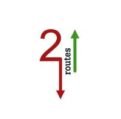Options trading involves contracts that give you the right, but not the obligation, to buy or sell an asset at a specific price on or before a certain date. Here’s a breakdown:
Basics
- Contract: An option is a contract between a buyer and a seller.
- Right, not obligation: The buyer has the right, but not the obligation, to exercise the contract.
- Underlying asset: The asset that can be bought or sold (e.g., stock, commodity, index).
- Strike price: The price at which the asset can be bought or sold.
- Expiration date: The date the option expires.
Types of Options
- Call option: Gives the buyer the right to buy the underlying asset.
- Put option: Gives the buyer the right to sell the underlying asset.
How Options Trading Works
- Buyer: The buyer pays a premium to the seller for the option contract.
- Seller: The seller receives the premium and is obligated to fulfill the contract if the buyer exercises it.
- Exercise: If the buyer decides to exercise the option, the seller must buy or sell the asset at the strike price.
- Expiration: If the buyer doesn’t exercise the option by the expiration date, it becomes worthless.
Example
Let’s say you believe the price of Apple stock will rise. You could buy a call option with a strike price of $150 and an expiration date in one month.
- If the price of Apple stock rises above $150, you could exercise the option and buy the stock at $150, then sell it at the higher market price for a profit.
- If the price of Apple stock stays below $150, you could let the option expire and lose only the premium you paid for it.
Use Cases
- Speculation: Options can be used to bet on the direction of an asset’s price.
- Hedging: Options can be used to protect against losses in other investments.
- Income generation: Options can be sold to generate income from the premium received.
Risks
- Options can expire worthless: If the price of the underlying asset doesn’t move in the expected direction, the option can expire worthless, and the buyer loses the premium paid.
- Options trading can be complex: It’s important to understand the different types of options and trading strategies before getting started.
